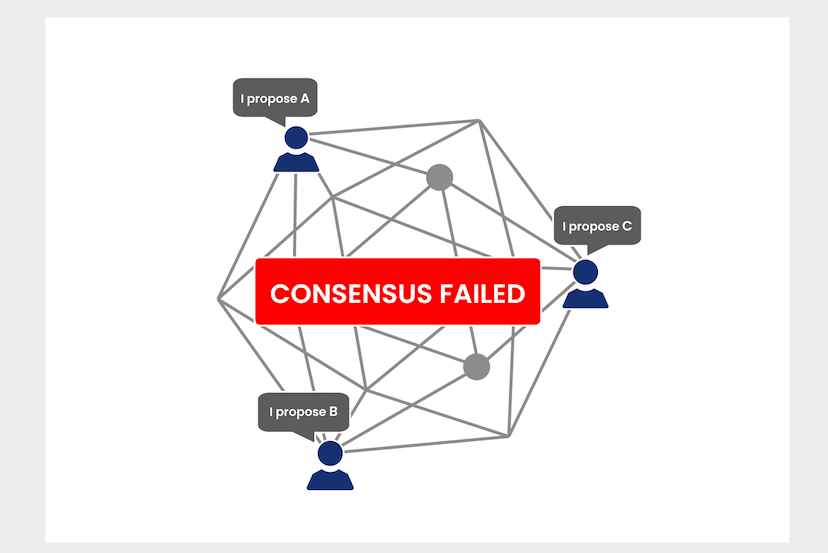Consensus algorithms play a fundamental role in blockchain technology’s ability to protect its integrity, security and efficiency of distributed ledger systems like blockchain networks by helping network participants agree upon valid transactions and the state of their ledger. Understanding consensus algorithms is critical to grasping how blockchain development operates and its practical applications.
What are Consensus Algorithms?
Defining Consensus
Consensus algorithms refer to protocols or mechanisms used to reach an agreement among network nodes in an decentralized system, such as blockchain. When applied specifically, consensus is attained when majority participants validate and approve of transactions that form part of a set, thus validating them into blockchain and creating permanent records in it.
Importance of Consensus
Consensus mechanisms are pivotal in maintaining the integrity and immutability of blockchain networks. They ensure all nodes reach agreement on transaction validity, thwarting double spending and fraud. This trustless environment eliminates the need for intermediaries, fostering decentralization. For businesses navigating the complexities of blockchain technology, consulting services provide invaluable guidance. With expert assistance, companies can harness the power of blockchain networks securely and effectively. Blockchain technology consulting offers tailored strategies for implementation, optimization, and maintenance, ensuring businesses stay ahead in the evolving landscape.
Types of Consensus Algorithms
Proof of Work (PoW)
Proof of Work was first proposed by Satoshi Nakamoto as the original consensus algorithm in his Bitcoin whitepaper, where miners compete against one another by solving complex mathematical puzzles in order to verify transactions and add new blocks onto its chain.
Pros and Cons
- Pros: PoW is highly secure and resistant to attacks due to its computational intensity.
- Cons: However, PoW consumes substantial amounts of energy and has scalability limitations.
Proof of Stake (PoS)
Proof-of-Stake (PoS) consensus algorithms rely on validators being chosen based on their stake, or ownership, of cryptocurrency. In this way, validators have an incentive to act ethically or risk losing all staked coins if fraudulent transactions pass muster.
Pros and Cons
- Pros: PoS is more energy-efficient than PoW and offers greater scalability.
- Cons: Critics argue that PoS may lead to centralization, as wealthier participants have more influence over the consensus process.
Delegated Proof of Stake (DPoS)
Delegated Proof of Stake (DPoS) is an alternative form of Proof of Stake that allows coin holders to elect deputies who will validate transactions and produce blocks on their behalf; these delegates are accountable for maintaining network security and performance.
Pros and Cons
- Pros: DPoS is highly scalable and efficient, making it suitable for applications requiring high transaction throughput.
- Cons: However, DPoS introduces a degree of centralization, as the selection of delegates is influenced by coin holders’ voting power.
Emerging Consensus Mechanisms
Proof of Authority (PoA)
PoA blockchains achieve consensus through an appointed group of validators known as authorities who meet pre-established criteria — usually government agencies or established organizations with strong reputations.
Pros and Cons
- Pros: PoA offers high throughput and low transaction costs, making it suitable for enterprise applications.
- Cons: However, PoA sacrifices decentralization, as authority nodes have centralized control over the network.
Byzantine Fault Tolerance (BFT)
BFT consensus algorithms are engineered to accommodate for Byzantine faults – where nodes in a network behave maliciously or unexpectedly – while also guaranteeing consensus can still be reached regardless of faulty nodes in the network. BFT mechanisms ensure this can still happen even with adversarial nodes present.
Pros and Cons
- Pros: BFT algorithms provide robustness and fault tolerance, making them suitable for mission-critical applications.
- Cons: However, BFT may incur higher latency and overhead compared to other consensus mechanisms.
The Impact of Consensus Algorithms on Blockchain Development
Scalability and Performance
Consensus algorithms play a pivotal role in maintaining scalability and performance. By carefully choosing the appropriate mechanism, developers can tailor the blockchain to specific use cases, enhancing its efficiency and reliability. Whether it’s Proof of Work (PoW), Proof of Stake (PoS), or other consensus protocols, the decision profoundly impacts the network’s functionality.
Selecting an ideal consensus mechanism is paramount for Trusted USA blockchain development company to ensure optimal throughput, latency, and resource usage in its network.
Security and Resilience
Consensus algorithms play a direct role in the security and resilience of blockchain networks. Robust mechanisms ensure protection from different attacks like double spending, Sybil attacks and 51% attacks – protecting ledger integrity by keeping its integrity secure.
Governance and Decentralization
Consensus algorithms impact both the governance structure and decentralization of blockchain networks. Depending on which mechanism is chosen, power and authority may either be dispersed across participants of a network or concentrated among a select few stakeholders.
FAQs (Frequently Asked Questions)
What role are consensus algorithms playing in blockchain development?
Consensus algorithms facilitate consensus among network participants regarding transactions’ validity and ledger updates, providing for integrity, security and efficiency within blockchain networks.
What effects do consensus algorithms have on scaling and performance?
Choosing an effective consensus mechanism has an immediate influence over throughput, latency and resource use in blockchain networks – impacting their scalability and performance significantly.
What are some examples of consensus algorithms?
Some common consensus algorithms include Proof of Work (PoW), Proof of Stake (PoS), Delegated Proof of Stake (DPoS), Proof of Authority (PoA), and Byzantine Fault Tolerance (BFT).
What role does consensus have in blockchain technology?
Consensus in blockchain is essential to avoid double spending and fraud as well as ensure immutability – two essential features necessary for trustless transactions and decentralization.
Can Consensus Algorithms Affect Governance and Decentralization?
Different consensus mechanisms distribute decision-making authority and power between network participants in different proportions, altering governance structures and decentralization levels within blockchain networks accordingly.
Conclusion
Consensus algorithms form the core of blockchain technology, providing decentralized consensus and trustless transactions. From Proof-of-Work (PoW), Proof of Stake (PoS), PoA or BFT consensus mechanisms have an immense effect on security, scalability and governance of blockchain networks; understanding their roles and implications helps developers design robust blockchain solutions tailored specifically for specific use cases.




